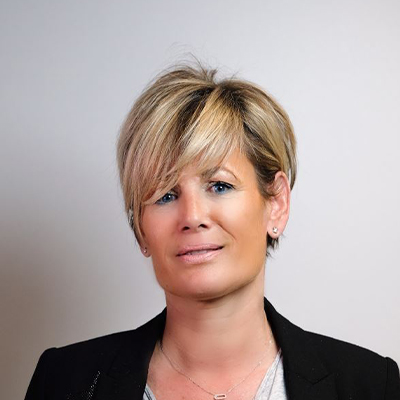Best Practices for Oracle Cloud Migration with Landing Zone Implementation - DEEP
Best Practices for Oracle Cloud Migration with Landing Zone Implementation
11 June 2024

The world of IT is constantly evolving, and businesses must adapt to remain competitive. Cloud migration has become a necessity for many organizations, offering increased flexibility, improved scalability, and cost reductions. However, the transition to the cloud is not always straightforward. Proper infrastructure preparation and a well-structured Landing Zone are crucial to ensuring a successful migration and fully leveraging the benefits of the cloud.
What is Oracle Cloud (OCI)?
The Benefits of Oracle Cloud
Oracle is a hyperscaler offering over a hundred services related to infrastructure (compute power, networking, storage, etc.), as well as database solutions (IaaS, PaaS, DBCS, Autonomous), Data Management, and emerging technologies like AI. Oracle's portfolio helps businesses in their digital transformation, providing key governance and security tools.
Why Migrate Oracle Databases to OCI?
Oracle offers various cloud database services, including:
-
Oracle Database Cloud Service (DBCS): A quick and simple solution for shared infrastructure and basic workloads.
-
Exadata Database Service (ExaCS): A dedicated Exadata platform designed for performance and database consolidation.
-
Exadata Cloud @ Customer (ExaCC): Oracle deploys Exadata in your data center, managing infrastructure while providing full Oracle Cloud services.
-
Autonomous Database: A fully managed database service, automating patching, backups, and lifecycle management, so businesses can focus on data operations.

Preparing a Landing Zone for a Successful Oracle Cloud Migration
Before starting a migration to Oracle Cloud, it is essential to properly prepare both your infrastructure and your teams. This preparation is known as the "Landing Zone"—the set of technical and organizational elements necessary to optimally integrate cloud services.
Key Steps to Prepare Your Landing Zone:
-
Assess Needs and Objectives
Begin by clearly defining your strategic and operational objectives for your cloud migration. Which areas need modernization first? What benefits are expected (agility, cost reduction, enhanced security)? This step will help you properly scale your cloud infrastructure.
-
Map Your IT System
Conduct a detailed inventory of your current IT system: applications, data, infrastructure, processes, etc. This mapping will help you identify elements to migrate first, those that need optimization, and those to replace.
-
Define Your Target Cloud Architecture
Based on your needs and existing setup, define the most suitable cloud architecture: public cloud, private cloud, or hybrid solution? Which cloud services (IaaS, PaaS, SaaS) will you use? This step ensures proper infrastructure scaling.
-
Prepare Teams and Processes
Cloud migration involves significant organizational and operational changes. Train your IT and business teams on new working methods and adjust your processes to fit the cloud (governance, security, change management, etc.).
-
Secure and Optimize Your Infrastructure
Finally, ensure your network, storage, and security infrastructure is ready to host your cloud environment. Implement best practices in security, backup, and monitoring to maximize the benefits of Oracle Cloud.
By following these steps, you will greatly improve your chances of a successful Oracle Cloud migration, maximizing its benefits for your business.
Discover Arpège’s Oracle Cloud (OCI) Migration Strategy Through an Optimized Landing Zone
Testimonial from Grégoire Binet, CIO at Arpège
Client Context
Arpège is a company with 300 employees specializing in the publishing, integration, and hosting of IT solutions for local governments. The company develops around ten tools designed for municipal agents and citizens. The IT department at Arpège has diverse needs: maintaining the IT system, CRM, and ERP in a traditional manner while also managing development needs with specialized environments. Arpège serves around 1,500 clients, with thousands of installed solutions and several million citizens managed through Arpège's solutions. The context of this project was to innovate to meet these demands.
Expectations from OCI
We established a requirements document outlining our needs and the right strategy for our Move to Cloud. One of our main expectations was to have transparent pricing with no hidden surprises. We chose OCI not only for its extensive range of over 100 services but also for its ability to provide clear and predictable pricing.
Co-Construction with Digora
With OCI, all services are available (Autonomous, VMware, etc.), including advanced cybersecurity solutions. While it is possible to deploy everything simultaneously, this also increases the risk of errors, even though OCI allows for easy rebuilding. However, once everything is set up, making changes becomes more complex.
This is why we partnered with Digora to define our architecture. Together, we established network, security, IaaS, and PaaS rules. Additionally, we prepared for the future by building a Landing Zone to create a scalable architecture aligned with our long-term vision.
Arpège’s Efforts
On Arpège’s side, we followed a structured plan with multiple workshops and collaborative sessions with Digora, iteratively breaking down our Oracle roadmap. This approach allowed us to implement what we had designed together, review progress, and adjust when needed. We also had the opportunity to ask questions and resolve specific challenges.
Additionally, we completed Oracle online training, which was a significant advantage. There is also an opportunity to obtain Oracle certifications to strengthen our expertise.
What’s Next?
The possibilities are vast, especially with AI, as there is so much to develop. The ability to quickly create solutions through the cloud is extremely valuable. The demand from developers and consultants is high and requires rapid response times. Today, there is no longer a need to wait two or three months to deploy servers—we are much more agile.
With Digora, we are continuing with a flexible support package, as we still require cloud expertise. The major benefit of our partnership is the support contract, which provides level 2 and level 3 expertise, particularly for cloud-related issues. Thanks to GTI and GTR, the contract allows us to contact Digora in case of a problem and receive a quick response.
Do you have a cloud migration project? Contact our experts to find the best solution for your organization!
Contact us
Do you have any questions about an article? Do you need help solving your IT issues?
Contact an expert







Our experts answer your questions
Do you have any questions about an article? Do you need help solving your IT issues?
Other articles in the category Cloud
5 OneNote Tips to Boost Your Productivity
Learn 5 quick OneNote tips to organize your ideas, collaborate with your team, and save time with Microsoft 365. Work smarter every day!
Published on
04 November 2025
Work Smarter with Microsoft 365 and Teams
Stop sending files by email! Discover how Microsoft 365 and Teams help SMEs collaborate efficiently, share securely, and boost productivity.
Published on
04 November 2025
The Cloud, more than ever the foundation of digital transformation
Digital transformation is accelerating in Luxembourg, driven by the cloud. With the upcoming arrival of Azure Extended Zone in Luxembourg, organisations have new opportunities to combine agility and compliance.
Published on
17 October 2025
Got a project? Questions?
Send us a message and our experts will get back to you quickly.
DEEP? Your digital ally!
With DEEP, turn your IT projects into measurable and sustainable growth drivers.




